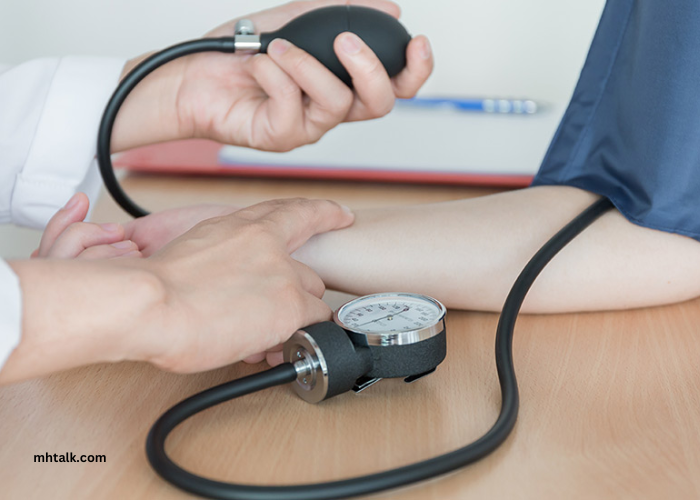A head to toe assessment is a cornerstone in nursing, a systematic method of evaluating a patient’s overall health status. It is a fundamental skill that allows healthcare professionals to establish a baseline of a patient’s condition, monitor any changes, and promptly respond to their needs. In this guide, we provide a detailed walkthrough of each step, equipping you with the knowledge to perform a thorough and effective assessment.
Understanding the Four Main Methods of Physical Examination
Inspection
The first step of any physical examination is inspection. A nurse or healthcare provider uses their eyes and nose to observe and smell the patient, looking for signs deviating from normal health. During the inspection, the examiner pays attention to abnormalities in skin color, shape, consistency, symmetry, and any other noticeable features that could be indicative of underlying health issues. This non-invasive method often provides a wealth of information about the patient’s well-being.
Palpation
Palpation is the method of examining the body using the sense of touch. It is a hands-on approach where a nurse gently feels the body’s surfaces to detect the temperature, texture, moisture, mobility, and other aspects of organs and systems. Palpation can be either light or deep. Light palpation helps assess surface characteristics and can identify areas of tenderness or superficial abnormalities. Deep palpation allows the examiner to feel deeper structures, like organs, and evaluate their size, shape, and any potential abnormalities.
Percussion
Percussion involves tapping on the body’s surfaces to produce sounds. The quality of these sounds can reveal what’s beneath, including the presence and position of air, fluid, or solid structures within the body. This method can also help determine the size, consistency, and borders of organs, aiding in identifying possible health issues.
Auscultation
Lastly, auscultation involves listening to the internal sounds of the body, usually with the aid of a stethoscope. It’s a crucial method for examining the heart, lungs, blood vessels, and the gastrointestinal system. By listening, healthcare professionals can detect normal and abnormal sounds, which could indicate various conditions. Auscultation requires a trained ear and a quiet environment to ensure accurate assessment of these sounds.
Before You Begin
Before initiating the assessment, ensure privacy and explain the procedure to the patient to obtain consent. Gather all necessary equipment, such as a stethoscope, blood pressure cuff, thermometer, and penlight, and prepare to document findings meticulously throughout the process.
General Overview
The initial stage sets the pace for your assessment:
- Collect vital signs: heart rate, blood pressure, temperature, pulse oximetry, respiratory rate, pain levels.
- Measure height and weight for BMI calculation.
Hair, Skin, and Nails
Assess from the crown down:
- Inspect hair for distribution and infestations.
- Check the skin for lesions, temperature, and moisture.
- Evaluate nails for color, capillary refill, and any pressure areas.
Head and Face
Observe and palpate the head and face:
- Ensure the head’s shape is rounded and symmetrical.
- Assess facial symmetry and the absence of masses.
Eyes
A meticulous eye exam is vital:
- Examine external structures and eye symmetry.
- Perform visual acuity tests, including the Snellen Chart.
- Assess pupil response (PERRLA) and eye movement.
Nose and Sinuses
Continue with a focused nasal assessment:
- Check symmetry and patency of nares.
- Palpate sinuses for tenderness.
Mouth and Throat
Oral cavity examination includes:
- Inspection of lips, teeth, gums, and tongue.
- Assessment of taste, swallow function, and gag reflex.
Ears
Auditory checks are crucial:
- Perform a visual inspection and hearing tests (whisper, Weber, and Rinne tests).
Neck
Assess the neck for:
- Symmetry of neck muscles and lymph nodes.
- Tracheal placement and neck’s range of motion.
Chest: Cardiovascular Assessment
Evaluate the heart by:
- Auscultating heart sounds across traditional landmarks.
- Palpating carotid and assessing the apical pulse.
Chest: Respiratory Assessment
Respiratory status is checked through:
- Auscultation of lung sounds.
- Observation of chest expansion and effort during breathing.
Abdomen
An abdominal exam includes:
- Inspection and auscultation for bowel sounds.
- Palpation for tenderness and masses.
Extremities
Evaluate the limbs for:
- Range of motion and strength.
- Sensation, capillary refill, and radial/pedal pulses.
Back
Inspect the back and spine for:
- Symmetry, movement, and signs of pressure areas or lesions.
Specialized Assessments
Respiratory
Begin with subjective questions about respiratory issues, then inspect for signs of breathing difficulty, and auscultate lung sounds for any abnormalities.
Abdominal
Start with a subjective overview of gastrointestinal complaints, then inspect, auscultate, and palpate the abdomen, noting any irregularities.
Integumentary
Question the patient about skin issues, inspect for overall skin condition and any intravenous sites, palpate for texture and moisture, and perform a detailed wound assessment if needed.
After the Assessment
Once the assessment is complete, inform the patient, address any concerns, and ensure all findings are documented accurately. This record will inform care decisions and potentially guide interventions.
Enhancing Physical Examination Training with GoReact
When teaching the intricacies of a head-to-toe assessment, video technology can be a game-changer, and GoReact is at the forefront of this innovation. With its video assessment tools, GoReact simplifies the process for both students and educators, making learning more interactive, efficient, and effective.
Streamlined Video Submissions
GoReact allows for seamless video submissions by compressing the files automatically. This makes it easy for educators to access and review student assessments without the hassle of incompatible file formats or oversized videos.
Easy-to-Use Equipment
Students don’t need to invest in high-end recording equipment; GoReact is compatible with everyday devices like smartphones and laptops. This accessibility ensures that all students can participate, regardless of their technological capabilities.
Integrated and Accessible Feedback
Feedback is a cornerstone of learning, and GoReact excels in this area. Educators can provide time-stamped, precise feedback directly on the video submissions. The use of customized markers helps in highlighting specific points of the assessment, making it easier for students to understand and learn from their performance.
Immediate Feedback Loop
Once the educators complete their reviews, students can instantly access the feedback. This prompt review system fosters a rapid learning cycle and allows students to quickly address any areas needing improvement.
Using a tool like GoReact can transform the educational experience for nursing students learning the head-to-toe assessment. It allows for a more interactive and detailed learning process, enhancing the acquisition of these vital clinical skills. By incorporating video technology, nursing education programs can offer their students a cutting-edge learning environment that aligns with modern healthcare standards.
Conclusion
A head-to-toe assessment is crucial in providing high-quality, individualized care. Remember, expertise in these evaluations comes from consistent practice. By incorporating this guide into your routine, you’re taking a significant step toward enhancing patient outcomes.
To further refine your assessment skills, leverage the power of GoReact. Its video assessment capabilities offer a seamless way to practice, receive feedback, and track your progress. Take the next step in clinical excellence—discover GoReact today and bring your healthcare education into the digital age.
Related posts
Recent Posts
InformalNewz: A New Era of Unconventional News Reporting
In the ever-evolving landscape of media and journalism, new platforms and approaches are constantly emerging to meet the demands of…
Balanced Living: Strategies for Achieving Wellness in a Hectic World
In today’s fast-paced world, achieving a sense of balance can often feel like an elusive goal. Juggling work, family, social…



